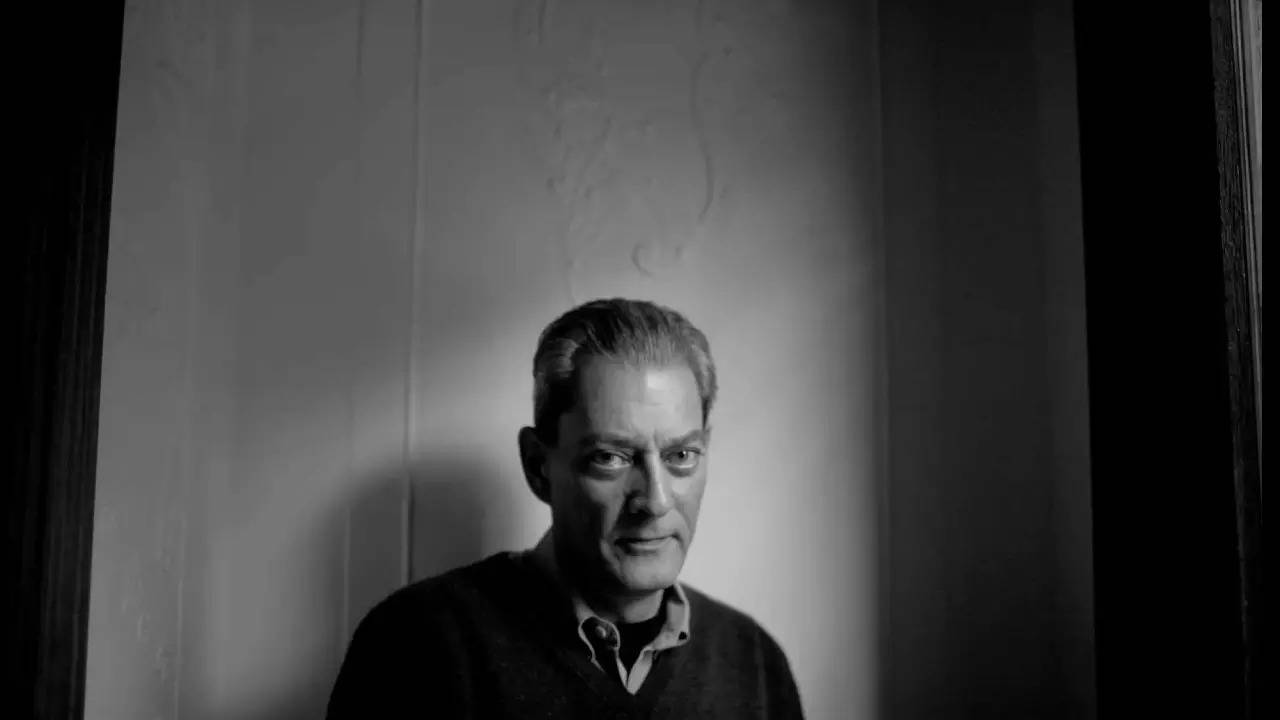With his hooded eyes, soulful air and leading-man looks, Auster was often described as a “literary superstar”.Times Literary Supplement of Britain once called him “one of America’s most spectacularly inventive writers.” Though a New Jersey native, he became indelibly linked with the rhythms of his adopted city, which was a character of sorts in much of his work – particularly Brooklyn, where he settled in 1980.
His reputation was anything but local, however. He took home several literary prizes in France alone. Auster, who had lived in Paris as a young man, became one of those rare American imports to be embraced by the French as a native son. “Merely a bestselling author in these parts, Auster is a rock star in Paris,” New York magazine observed in 2007. In Britain, his 2017 novel, “4321”, which examined four parallel versions of the early life of its protagonist – as Auster was, a Jewish boy born in Newark in 1947 – was shortlisted for the Man Booker Prize.
His career began to take flight in 1982, with his memoir “The Invention of Solitude”, a haunting rumination on his distant relationship with his recently deceased father. His first novel, “City of Glass”, was rejected by 17 publishers before it was published by a small press in California in 1985. The book became the first installment in his most celebrated work, “The New York Trilogy“, three novels later packaged in a single volume. It was listed as one of the 25 most significant New York City novels of the last 100 years in T, NYT’s style magazine. The trilogy, which included “City of Glass,” “Ghosts” and “The Locked Room, was a postmodern detective saga in which names and identities blur and one protagonist is a private eye named Paul Auster.
Writing six hours a day, often seven days a week, he pumped out a new book nearly annually for years. He ultimately published 34 books, accounting for shorter works that were later incorporated into larger books, including 18 novels and several acclaimed memoirs and assorted autobiographical works, along with plays, screenplays and collections of stories, essays and poems.
By the 1990s, Auster had set his sights on Hollywood. He wrote several screenplays, some of which he directed. Auster co-directed 1995 “Blue in the Face”, sprinkled with cameos by a host of stars, including Lou Reed musing on cigarettes, and Madonna delivering a saucy singing telegram. Auster would go on to write and direct “Lulu on the Bridge” (1998), about a jazz saxophonist whose life takes a turn when he’s hit by a stray bullet at a New York club; and “The Inner Life of Martin Frost” (2007), about an author who retreats to a friend’s country house for solitude, only to become entranced by a woman there.
Auster at times expressed irritation that much of his career had been assessed in relation to “The New York Trilogy”. “Even so… I don’t think in terms of ‘best’ or ‘worst.’ Making art isn’t like competing in the Olympics, after all.”
!(function(f, b, e, v, n, t, s) {
function loadFBEvents(isFBCampaignActive) {
if (!isFBCampaignActive) {
return;
}
(function(f, b, e, v, n, t, s) {
if (f.fbq) return;
n = f.fbq = function() {
n.callMethod ? n.callMethod(…arguments) : n.queue.push(arguments);
};
if (!f._fbq) f._fbq = n;
n.push = n;
n.loaded = !0;
n.version = ‘2.0’;
n.queue = [];
t = b.createElement(e);
t.async = !0;
t.defer = !0;
t.src = v;
s = b.getElementsByTagName(e)[0];
s.parentNode.insertBefore(t, s);
})(f, b, e, ‘https://connect.facebook.net/en_US/fbevents.js’, n, t, s);
fbq(‘init’, ‘593671331875494’);
fbq(‘track’, ‘PageView’);
};
function loadGtagEvents(isGoogleCampaignActive) {
if (!isGoogleCampaignActive) {
return;
}
var id = document.getElementById(‘toi-plus-google-campaign’);
if (id) {
return;
}
(function(f, b, e, v, n, t, s) {
t = b.createElement(e);
t.async = !0;
t.defer = !0;
t.src = v;
t.id = ‘toi-plus-google-campaign’;
s = b.getElementsByTagName(e)[0];
s.parentNode.insertBefore(t, s);
})(f, b, e, ‘https://www.googletagmanager.com/gtag/js?id=AW-877820074’, n, t, s);
};
function loadSurvicateJs(allowedSurvicateSections = []){
const section = window.location.pathname.split(‘/’)[1]
const isHomePageAllowed = window.location.pathname === ‘/’ && allowedSurvicateSections.includes(‘homepage’)
if(allowedSurvicateSections.includes(section) || isHomePageAllowed){
(function(w) {
var s = document.createElement(‘script’);
s.src=”https://survey.survicate.com/workspaces/0be6ae9845d14a7c8ff08a7a00bd9b21/web_surveys.js”;
s.async = true;
var e = document.getElementsByTagName(‘script’)[0];
e.parentNode.insertBefore(s, e);
})(window);
}
}
window.TimesApps = window.TimesApps || {};
var TimesApps = window.TimesApps;
TimesApps.toiPlusEvents = function(config) {
var isConfigAvailable = “toiplus_site_settings” in f && “isFBCampaignActive” in f.toiplus_site_settings && “isGoogleCampaignActive” in f.toiplus_site_settings;
var isPrimeUser = window.isPrime;
if (isConfigAvailable && !isPrimeUser) {
loadGtagEvents(f.toiplus_site_settings.isGoogleCampaignActive);
loadFBEvents(f.toiplus_site_settings.isFBCampaignActive);
loadSurvicateJs(f.toiplus_site_settings.allowedSurvicateSections);
} else {
var JarvisUrl=”https://vsp1jarvispvt.indiatimes.com/v1/feeds/toi_plus/site_settings/643526e21443833f0c454615?db_env=published”;
window.getFromClient(JarvisUrl, function(config){
if (config) {
loadGtagEvents(config?.isGoogleCampaignActive);
loadFBEvents(config?.isFBCampaignActive);
loadSurvicateJs(config?.allowedSurvicateSections);
}
})
}
};
})(
window,
document,
‘script’,
);








More News
Flash floods and cold lava flow hit Indonesia’s Sumatra island; at least 37 killed – Times of India
UK foreign secretary says halting arms sales to Israel would only strengthen Hamas – Times of India
Hamas condemns Biden for saying ‘truce tomorrow if hostages freed’ – Times of India